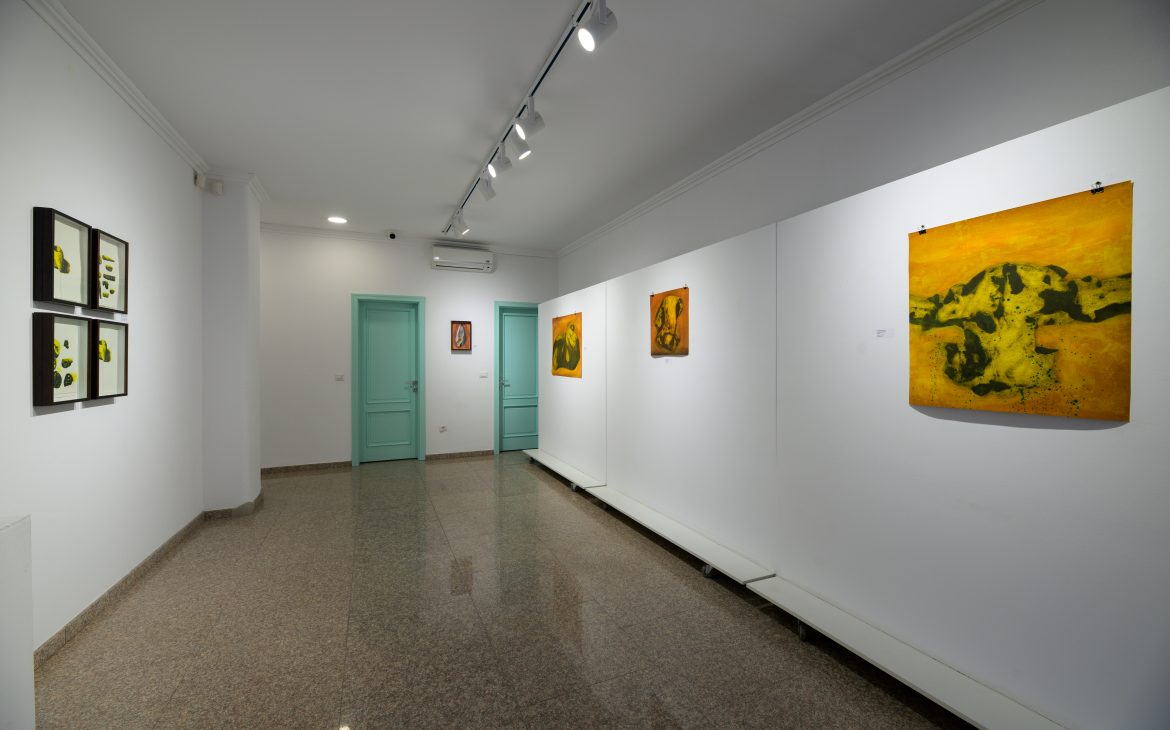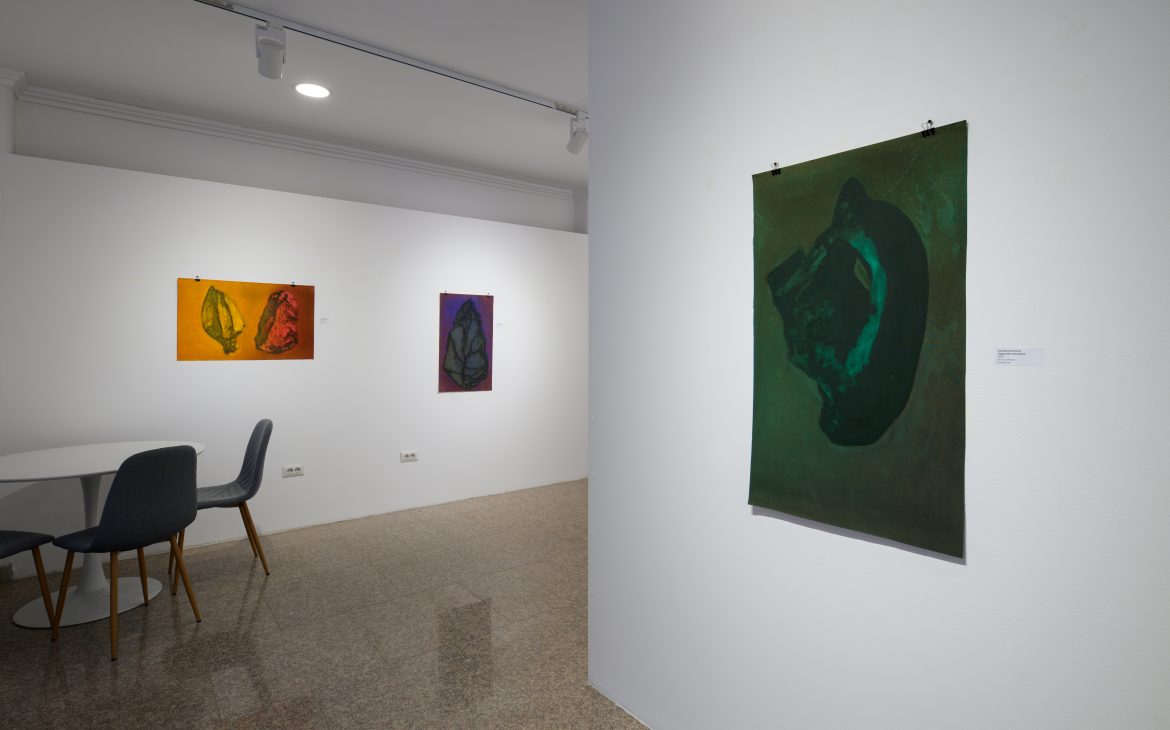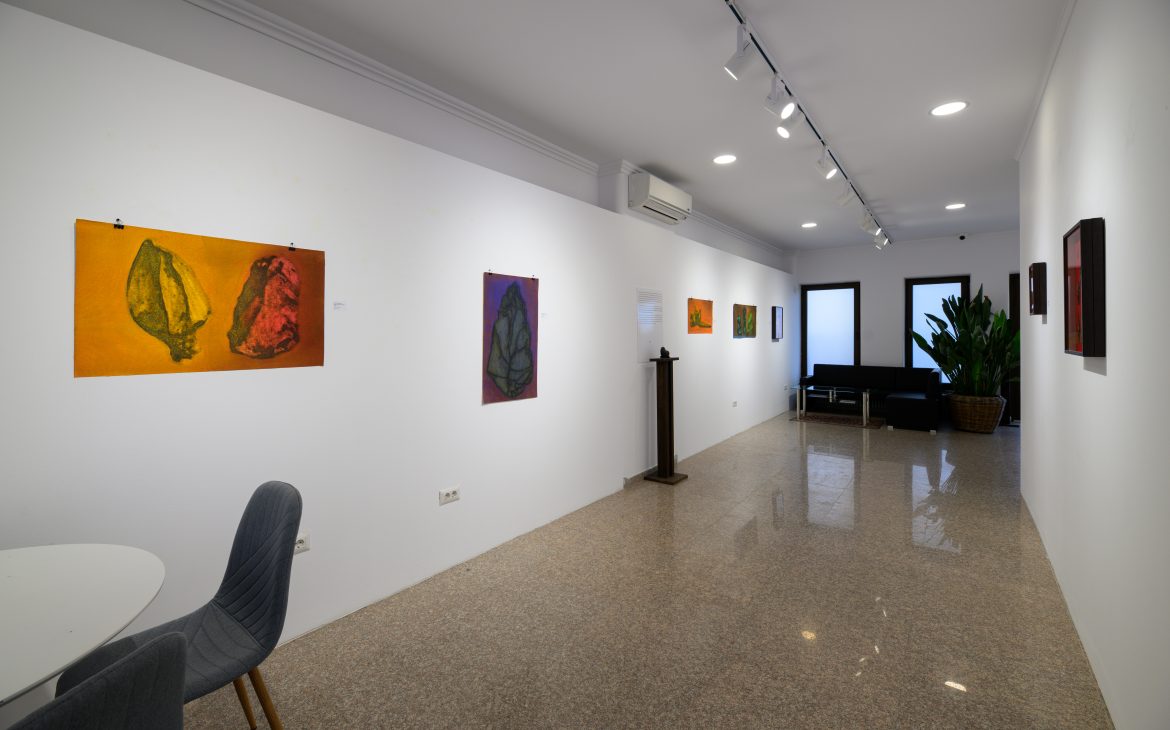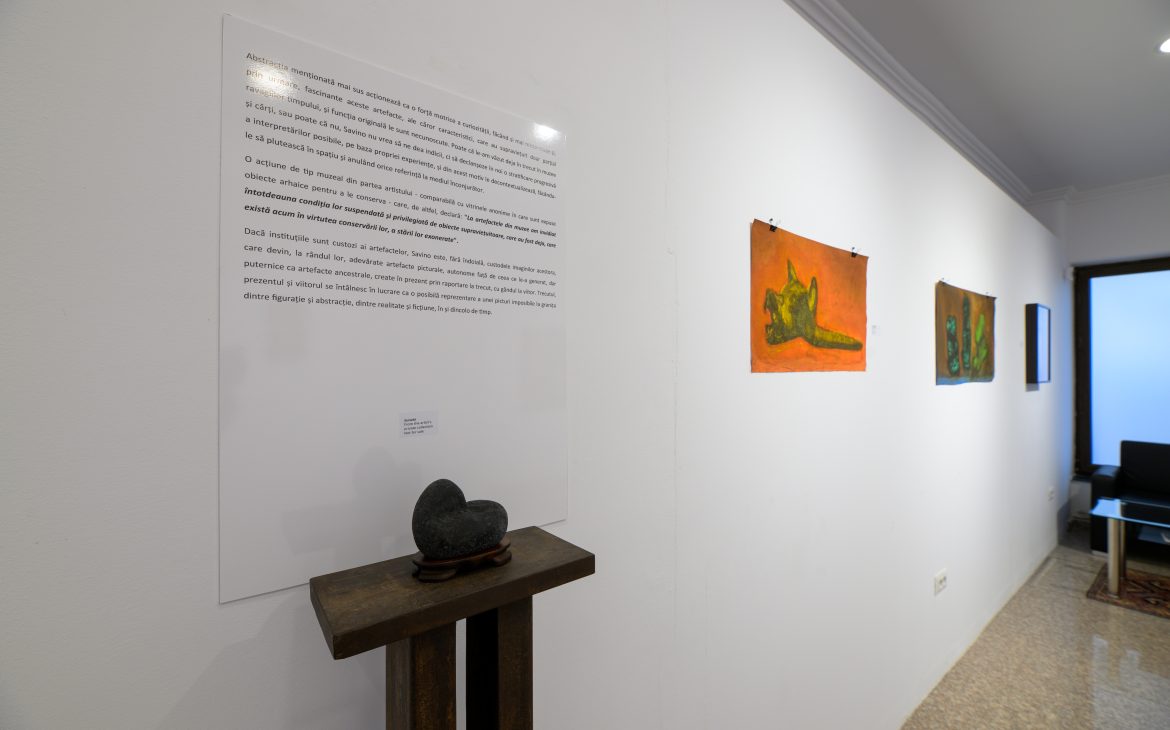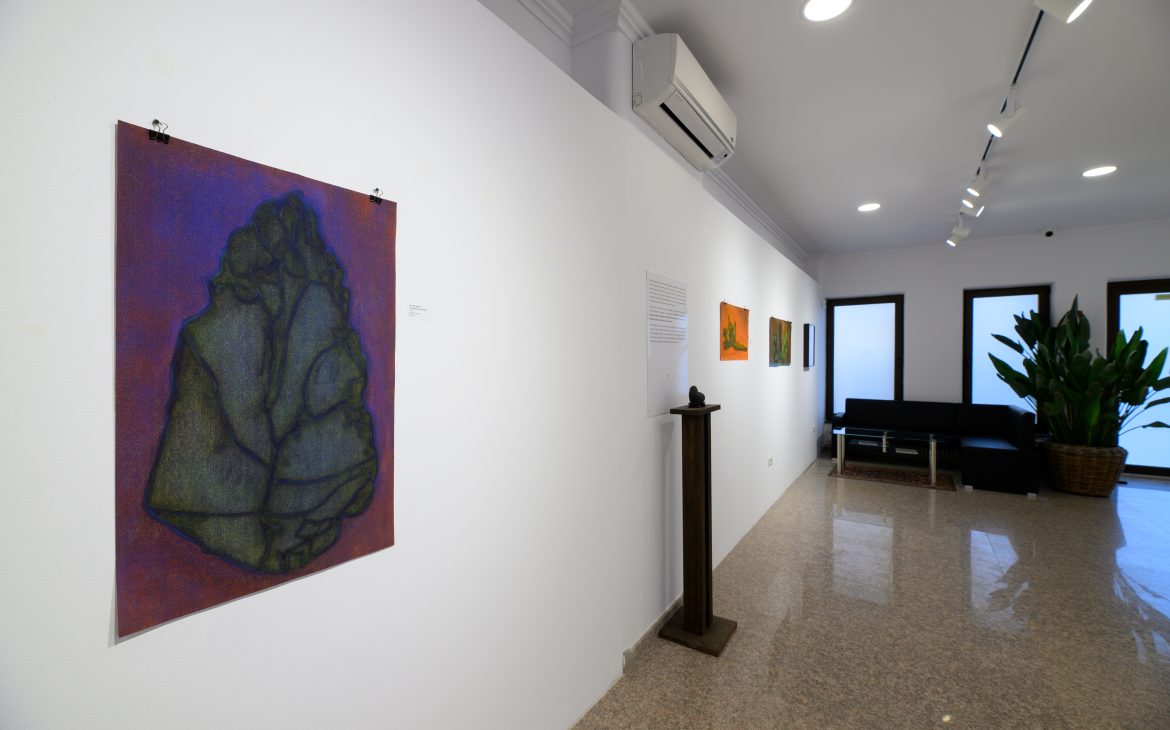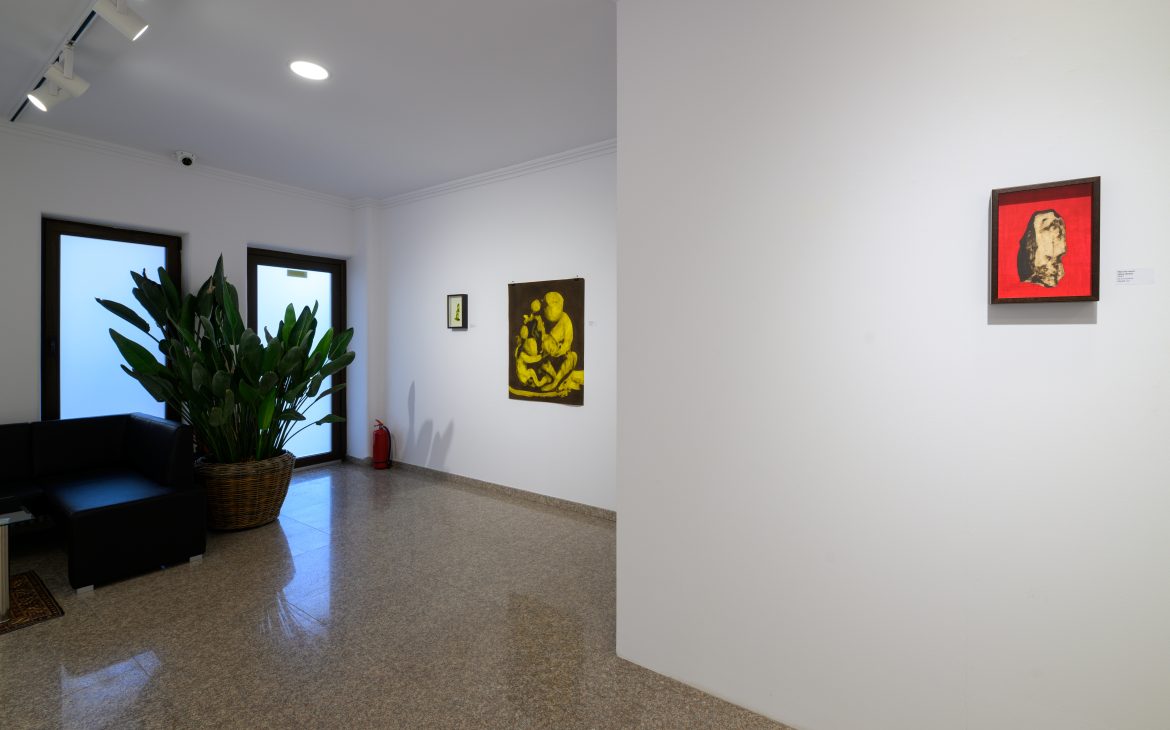IAGA Contemporary Art presents the first solo exhibition of the young Italian artist Michele Savino (b. 1989, Bergamo Italy), winner of the Combat Award, awarded by the gallery on the occasion of its fourteenth edition, in July 2023, in Livorno, an award that offers an exhibition in person at the gallery headquarters.
Exactly one year after the awarding of the Prize, the exhibition Erosioni sospese | Suspended Erosions, curated by Camilla Remondina, focuses on the artist’s most recent output, predominantly works made in 2023 and a selection of works from 2024, most of which have not been exhibited before. The exhibition includes the work that gave birth to this project, Gabinetto Archeologico /Archaeological Cabinet (2018), placed in the opening as a manifesto of this partnership.
“Even before being an artist, Michele Savino is a collector, a tireless researcher of history and what has come down to us – hence his curiosity about science and the processes of transformation of matter that are reflected in the definitions he uses.
His research also reflects this fascination for objects that have been corroded but restored by time, witnesses of a more or less distant past, which, from simple tools, have taken on a privileged role as relics.
As the title suggests, his subjects are eroded, undefined to the point where they approach abstraction, but suspended, frozen in the moment of their pictorial representation. The artist is entrusted with the task of exalting their degenerative process, contrary to traditional painting which would like to preserve their flourishing appearance: he consumes them more sharply, acting upon them as the relentless time – despite his intention to keep them away from it – and he colours them with acid tones, different from reality, to remind us that we are not looking at the object itself, but at its representation, as René Magritte recalled in one of his famous works.
Together with sketches in oil colours and bands of contrasting colours, these elements highlight the presence and importance of painting, in an attempt, even in figuration, to represent painting itself and to reflect on what it means, today more than ever, to make painting.
The aforementioned abstraction acts as a driving force of curiosity, making these artefacts even more mysterious and therefore fascinating, whose characteristics, which have only partially survived the ravages of time, and original function are unknown. Perhaps we have already seen them in the past in museums and books, or perhaps not, Savino does not want to give us clues, instead he wants to trigger in us a progressive layering of possible interpretations, based on our own experience, and for this reason he decontextualises them, making them float in space and annulling any reference to their surroundings.
A museum-like action on the part of the artist – comparable to the anonymous showcases in which archaic objects are exhibited in order to be preserved – who, moreover, declares: “I have always envied the artifacts in museums for their suspended and privileged condition of surviving objects, which have already been, which now exist by virtue of their preservation, their exonerated state”.
If institutions are custodians of artefacts, Savino is undoubtedly the custodian of their images, which in turn become true pictorial artefacts, autonomous from what generated them, but powerful as ancestral artefacts, created in the present by reference to the past, with an eye to the future. Past, present and future meet in the work as a possible representation of an impossible painting at the border between figuration and abstraction, between reality and fiction, in and beyond time.
The concept of exoneration has accompanied the artist since his first solo exhibition (Sono esonerato da educazione fisica / I am exempted from physical education, 2011), and if it is true that the term indicates a “motivated exemption from fulfilling an obligation”, then the reason why his exhibits are immune to decay is to cope with the fragility of the objects, with forgetfulness. His subjects are often reproduced in different works and in polyptychs – either on wooden slabs kept as prized possessions in entomological boxes or, in stark contrast, on canvases free to float in the exhibition space – depicting their different perspectives, similar but never the same, a reiteration meant to underscore the fear of losing the original finding.
Erosion is only suspended, a temporary condition that must be accepted as such: time has already left its mark on them as a reminder of its unstoppable, even if slow and almost imperceptible, action. The artist himself states it: “That museum immobility and that exoneration that deprives and privileges permeates the exhibits within their imposed, undeserved and temporary contexts of human preservation and cataloguing. In the showcases of museum collections, they appear to be exempt from time, but are perhaps only in a state of suspension, as the needles suspend the paper inside the entomological box; a more mundane state of waiting for the exhibition to pass, for the encyclopedic taste to decay, for that captivity to end and return underground.”
The same destiny is already written for the works, they are the saving testimonies of condemned objects but, in their turn, they will know wear and tear, reaffirming for everything and everyone the unstoppable looming of time.
In his daily life, Michele Savino writes – the titles of his works are extremely important to him -, paints, grows bonsai and more; in fact, among his many passions, when it comes to nature, there is also room for suiseki. According to Japanese art, these are stones found in nature with a particularly pleasing appearance and capable of encouraging meditation; in China, in fact, they are also called “scholar’s stones”.
Savino displays them inside his studio on pedestals hand-carved in the shape of the stone, according to tradition, and in open spaces, creating a harmonious composition with bonsai, placed in discreet bowls to water them with the water in which they then stand in warmer periods: they are objects that need to be cared for, like plants.
Because of their meditative power, the exhibition presents three specimens from Savino’s collection, collected in the Brembo River, whose bases were carved by himself in 2023 from cherry wood and which, together with the works, foster a contemplative atmosphere.
Vari scheletri a tema / Various themed skeletons (2024), a polyptych made especially for the exhibition, ideally closes the circle opened with Gabinetto Archeologico and crossed by all the works from 2018 to this day, present in the gallery, sharing technique and meanings, but in a more essential and immediate form. Pixels hand reproduced with India ink on cotton paper, in antithesis to their purely digital origin, have the task of suggesting the abstraction of an image that irretrievably disappears, actually falls apart, demonstrating the coherence of his thinking and the appeal the artist makes for these findings and for painting.
Michele Savino is an archaeologist of the image, studying its origins and reconstructing its essence in order to theorize the role of iconography in an age marked by the fury of the images.”
Camilla Remondina
The exhibition can be visited for free from Tuesday to Saturday, from 2.00 to 6.00 pm and by appointment.
Address: IAGA Contemporary Art, Cloşca Street, n. 9-11, Cluj-Napoca, Romania


